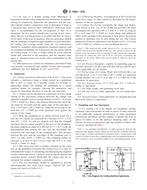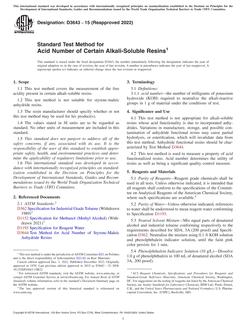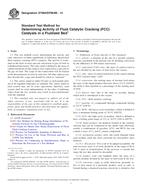1.1 This practice describes the techniques for planning, conducting, analyzing, and treating results of an interlaboratory study (ILS) for estimating the precision of a fire test method when fewer than six laboratories are available to meet the recommended minimum requirements of Practice E 691. Data obtained from an interlaboratory study are useful in identifying variables that require modifications for improving test method performance and precision.
1.2 Precision estimates developed using this practice will not be statistically equivalent to precision estimates produced by Practice E 691 because a small number of laboratories are used. The smaller number of participating laboratories will seriously reduce the value of precision estimates reported by this practice. However, under circumstances where only a limited number of laboratories are available to participate in an ILS, precision estimates developed by this practice will provide the user with useful information concerning precision for a test method.
1.3 A minimum of three qualified laboratories is required for conducting an ILS using this practice. If six or more laboratories are available to participate in an ILS for a given fire test method, Practice E 691 shall be used for conducting the ILS.
1.4 Since the primary purpose of this practice is the development of the information needed for a precision statement, the experimental design in this practice will not be optimum for evaluating all materials, test methods, or as a tool for individual laboratory analysis.
1.5 Because of the reduced number of participating laboratories a Laboratory Monitor shall be used in the ILS. See Standard Guide E 2335.
1.6 Field of Application – This practice is concerned with test methods that yield numerical values or a series of numerical values for different fire-test response properties. The numerical values mentioned above are typically the result of calculations from a set of measurements.
1.7 This practice includes design information suitable for use with the development of interlaboratory studies for test methods that have categorization (go-no-go) allocation test results. However, it does not provide a recommended statistical practice for evaluating the go-no-go data.
1.8 This standard does not purport to address all of the safety concerns, if any, associated with its use. It is the responsibility of the user of this standard to establish appropriate safety and health practices and determine the applicability of regulatory limitations prior to use.
Product Details
- Published:
- 10/01/2008
- Number of Pages:
- 6
- File Size:
- 1 file , 95 KB


